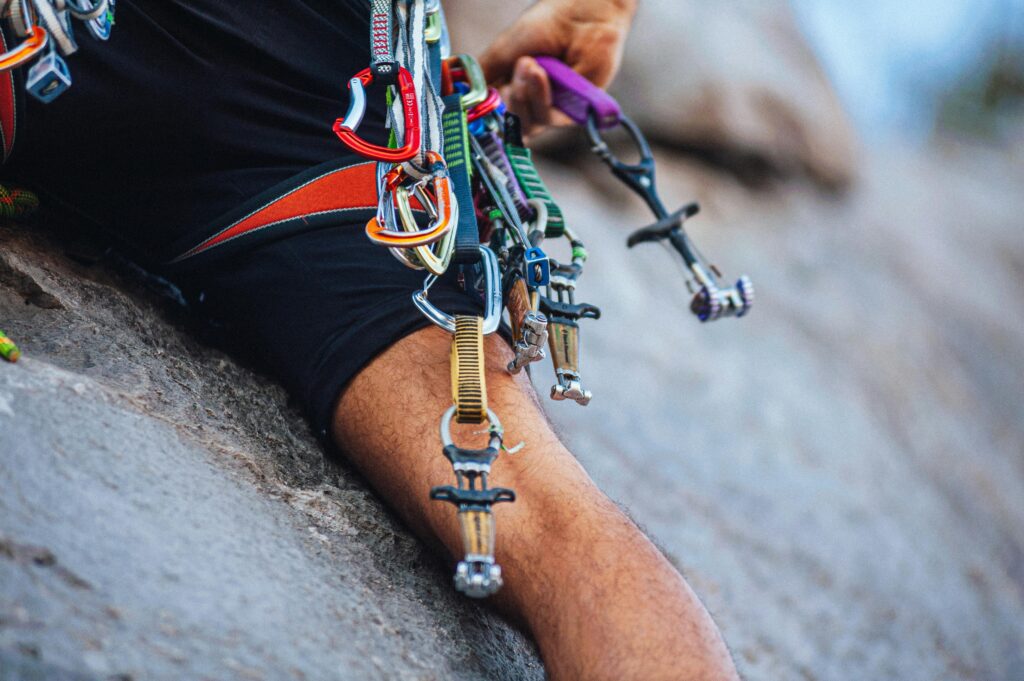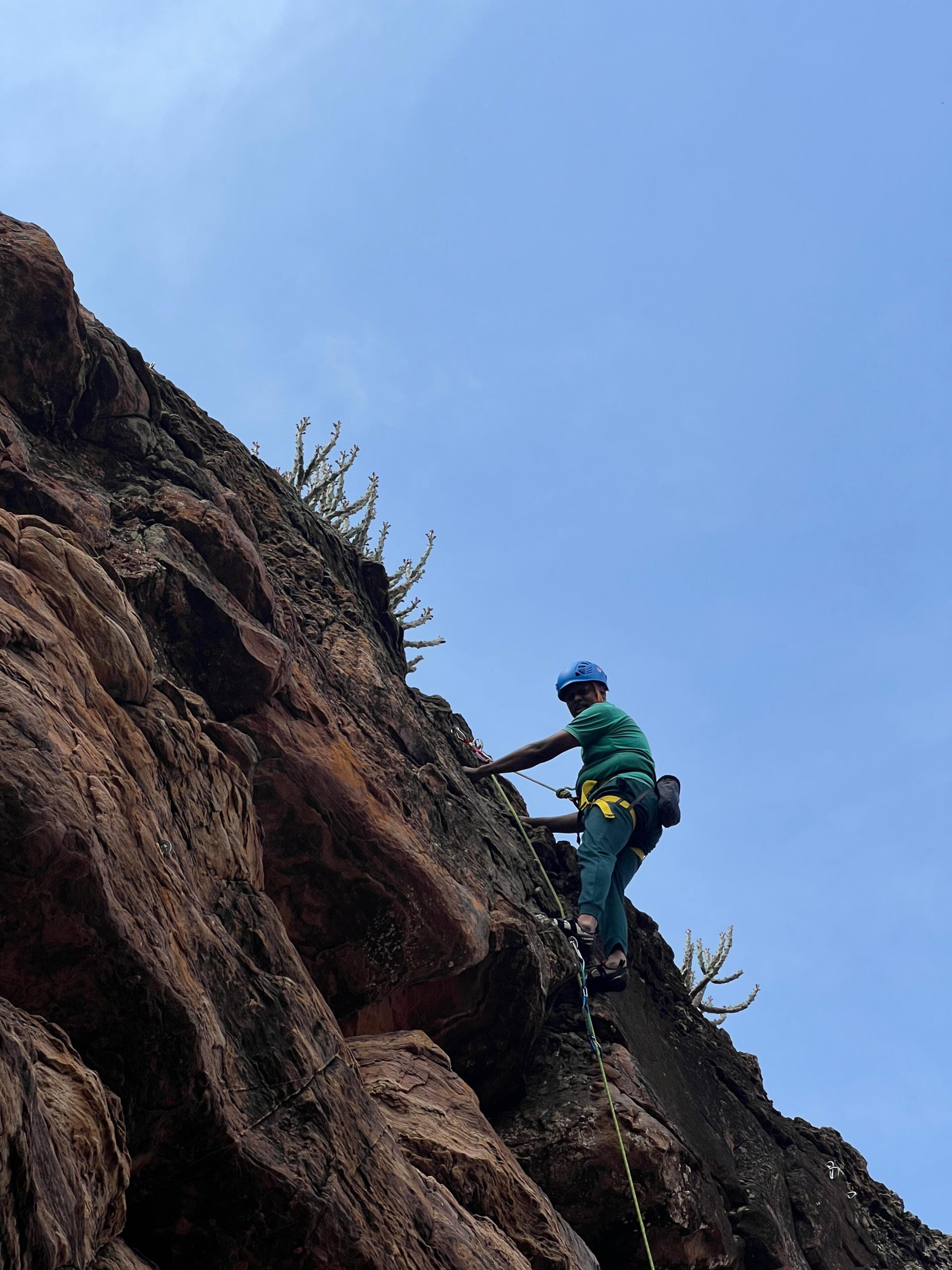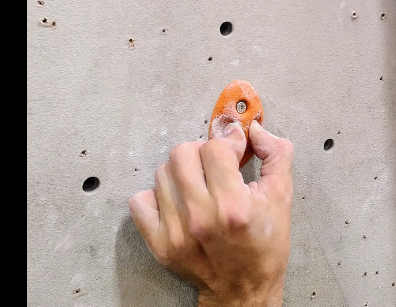Trad climbing, short for traditional climbing, is a style of rock climbing where climbers place their own protective gear into the rock as they ascend, rather than relying on pre-installed bolts or anchors. This approach allows climbers to explore natural rock formations with minimal impact on the environment.

Key Features of Trad Climbing
- Gear Placement
- Climbers carry and place gear, such as cams, nuts, or hexes, into cracks or other features in the rock.
- The gear is designed to catch a fall or hold weight but is removable to leave the rock unaltered.
- Focus on Natural Features
- Trad climbing often follows natural lines like cracks, corners, and ledges.
- Climbers rely on their ability to read the rock and place protection in secure spots.
- Protection is Removable
- Unlike sport climbing, where bolts are permanently drilled into the rock, trad climbing gear is taken out after the climb.
- This leaves the rock in its original state, which aligns with the ethic of minimizing environmental impact.
- Anchors for Belay and Descent
- At the top of the route, climbers build an anchor using gear to secure themselves or their partner.
- For multi-pitch climbs, anchors are also used at belay stations between pitches.
- Risk and Skill
- Trad climbing requires a higher level of skill and judgment compared to sport climbing.
- Poorly placed protection can fail in a fall, increasing the risks.
Gear Used in Trad Climbing
- Passive Protection: Nuts, hexes, and stoppers that wedge into rock cracks.
- Active Protection: Cams or spring-loaded devices that expand to grip the rock.
- Slings and Quickdraws: To extend gear placements and reduce rope drag.
- Climbing Harness and Helmet: Essential for safety.
- Ropes: Usually dynamic ropes, designed to absorb the impact of a fall.
Advantages of Trad Climbing
- Exploration: Allows climbers to tackle natural rock features that may not have pre-installed bolts.
- Minimal Environmental Impact: Leaves no permanent changes to the rock.
- Freedom: Climbers are not limited to bolted routes and can create their own path.
Challenges of Trad Climbing
- Technical Knowledge: Requires expertise in gear placement, anchor building, and route-finding.
- Higher Risk: A fall can be more dangerous if protection fails or isn’t placed well.
- Gear-Intensive: Requires a significant investment in equipment.
Trad climbing is often considered the essence of climbing adventure, emphasizing self-reliance, skill, and respect for nature. It appeals to those who enjoy the challenge of climbing in a more traditional, purist way.
Risk and Skill in Trad Climbing
Trad climbing demands a unique combination of technical skills, physical strength, and mental resilience due to the nature of its challenges. Unlike sport climbing, where bolts are pre-installed for protection, trad climbers are responsible for their own safety by placing gear into the rock. This creates a dynamic environment where mistakes in judgment, skill, or execution can have serious consequences. Here’s a detailed breakdown of these aspects:
1. Higher Skill Requirement
- Gear Placement:
- Properly placing protection (e.g., cams, nuts) requires knowledge of rock types, crack sizes, and the mechanics of the gear.
- Poor placements can fail under load, making falls more dangerous.
- Anchor Building:
- Climbers must construct secure anchors at belay stations or for descent. These anchors often combine multiple pieces of gear to ensure redundancy, requiring a deep understanding of equalization and load distribution.
- Route Finding:
- Trad routes often lack clear markings, so climbers need to analyze the rock to choose a safe and climbable path.
- Incorrect decisions can lead to harder-than-expected terrain or poor protection opportunities.
- Rope Management:
- Trad routes often involve zigzagging paths, which can create rope drag. Climbers must manage this by extending placements with slings or carefully planning the line of the rope.
2. Increased Risks
- Protection Failure:
- If gear is improperly placed or the rock quality is poor, protection may pull out during a fall, leaving the climber exposed to a longer and potentially more dangerous fall.
- Ground Falls and Ledging:
- Since trad climbers place gear as they ascend, the distance between placements can lead to significant falls.
- A fall close to the ground or near a ledge can result in serious injury, even if the gear holds.
- Rock Integrity:
- Trad climbing often involves natural, less-traveled rock. Loose or fragile rock can break under a climber’s weight or when gear is placed.
- Psychological Pressure:
- Unlike sport climbing, where climbers can clip into fixed bolts with confidence, trad climbing requires constant evaluation of the protection’s reliability.
- Fear of falling on questionable gear can lead to stress, hesitation, or fatigue, increasing the likelihood of mistakes.
3. Physical and Mental Demands
- Strength and Endurance:
- Placing gear mid-climb is physically taxing, especially on steep or sustained routes. Climbers need to hold themselves in position while evaluating and placing protection.
- Trad climbs are often longer and more complex, demanding greater endurance.
- Mental Focus:
- Climbers must remain calm and analytical under pressure. The ability to focus on placing reliable protection while climbing challenging terrain is crucial.
- The mental challenge of confronting risk and fear often exceeds the physical difficulty of the climb itself.
4. Learning Curve
- Experience is Key:
- Beginners face a steep learning curve. Until they develop confidence and skill in placing protection and building anchors, they are at higher risk.
- Mentorship or professional instruction is often essential for safely progressing in trad climbing.
- Decision-Making:
- Trad climbing is as much about making good decisions as it is about physical ability. Climbers must assess whether to place gear, continue climbing, or retreat in a variety of scenarios.
Balancing Risk and Reward
While trad climbing is inherently riskier than sport climbing, the rewards—exploration, adventure, and self-reliance—often outweigh the risks for experienced climbers. The key to managing these risks lies in developing skill, practicing regularly, and respecting the challenges of the natural environment.

